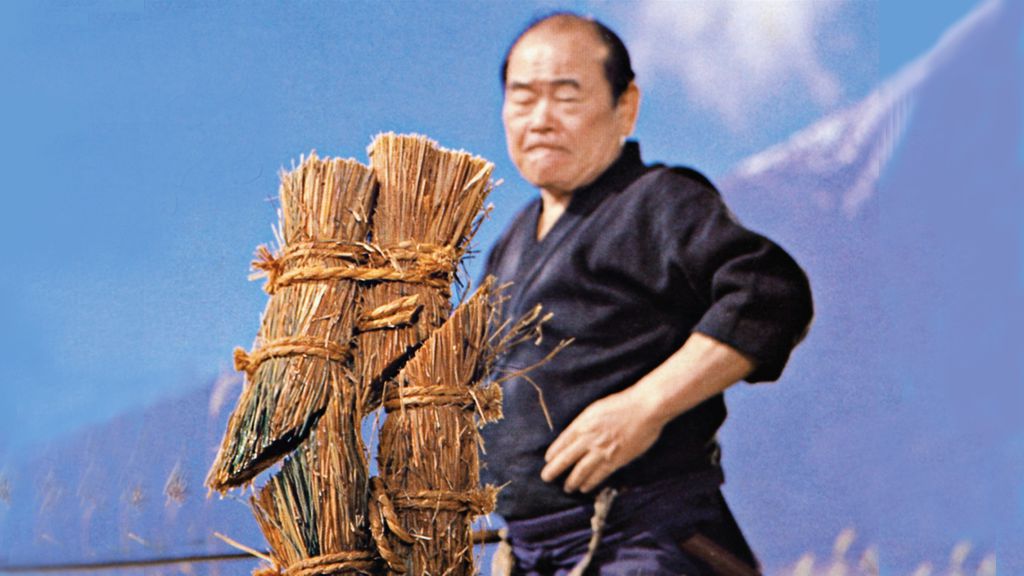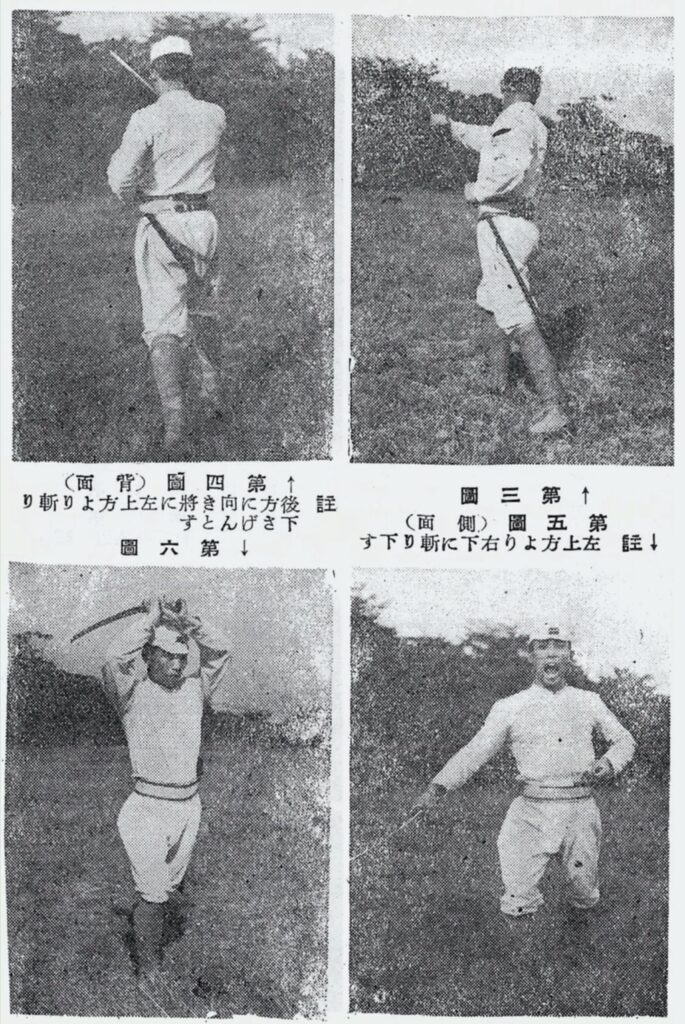
Throughout the history of Japan the Samurai and Japanese swordsmanship has been a part of the foundation of classical koryu swordsmanship and is still closely integrated with the tradition of kenjutsu. Japanese sword styles all have a common link in their basic foundations including the act of drawing the sword and executing a cut (batto-jutsu), which is an old term for iai-jutsu and batto-do. Simply translated batto-jutsu means to “draw sword”.
Toyama-Ryu was created out of necessity by the Japanese Imperial Army at the start of the Showa Era because soldiers had to master the fundamentals of swordsmanship quickly, without requiring years of study. By incorporating practical techniques from various koryu sword styles such as, Omori-ryu, Katori-ryu, and Eishin-ryu, they created a straightforward sword style that can be practically applied to the modern environment while practiced in a standing position.
Stripping away a sword styles signature ritualized movements and using only it’s practical application, makes techniques fast and direct. Thus incorporating Toyama-ryu-iai-batto-do as a foundation to any sword style will improve your fundamental gripping, drawing, cutting and sheathing skills.
Therefore if you are new to Japanese swordsmanship, have already practiced a particular style, or have come to a plateau in your studies, the study of Toyama-ryu offers an alternative mindset and will help you build a stronger foundation and will improve your basics.
Do you wonder what the difference is between all the sword styles and how batto-do compares with classical koryu sword styles that represent hundreds of years of ritual and tradition?
To begin with, learning an ancient koryu Japanese sword art is extremely difficult and takes a lifetime to master. Very few non-Japanese can understand the subtleties and nuances practiced as well as the Japanese language involved. A military gendai modern version of Japanese Swordsmanship such as Toyama-ryu can be grasped at a much faster pace, since the basics are about practical application and not about the seldom used techniques and rituals, which may be powerful to watch and perform, but are not practical to learn.
History, Linage and Development
Become a part of the Japanese Military Toyama-Ryu Sword System
At the beginning of the Meiji restoration the ancient “Way of the Samurai” and mindset was changing into a modern Japanese military. This attracted many provincial samurai who came to Tokyo to serve. These soldiers incorporated many of their ancestors’ koryu techniques into their swordsmanship. These ancient techniques were solid but proved difficult to standardize for a modern military.
To standardize a modern military circa 1875 the military university, Rikugun Toyama Gakko, was established in Shinjuku, Tokyo by Lieutenant General Uzawa who was also chancellor. He wrote the famous Japanese military sword book (Gunto no Souhou). To break down the name, “gun” means military, “to” means sword, “sou” means control, and “hou” means rule or law.
This book depicted 5 basic forms in Gunto no Souhou and was first published to homogenize various Koryu (ancient) techniques into a Gendai (modern) version to create a simple and efficient sword system that can be used everywhere, by everyone, in every situation. Consequently, Tabata Shigeyoshi was called upon to administer and redesign the training system adding new forms to the originals. Tabata Shigeyoshi was the overseer of this system from 1925 until the end of WW2, when the name Gunto no Souhou was changed to Toyama-Ryu due to the harsh meaning of the original name.

After WW2, Nakamura Taizaburo was asked to start teaching swordsmanship again by his superior, Tabata Shigeyoshi, at a time when it was illegal to practice a military sword discipline. Over the next 4 decades Nakamura Taizaburo’s swordsmanship helped promote Toyama-Ryu into an internationally known and practiced sword system. Nakamura Taizaburo who later in his life was knighted by the Emperor of Japan also developed a cutting system molded off the strokes of a brush/ pen called Happogiri.
Tanabe Tetsundo (my direct teacher) was the Secretary for the All Japan Ju-kendo Federation, founded by General Imamura in 1955. He became a student of Nakamura Taizaburo who was practicing Toyama-Ryu under the auspices of the All Japan Ju-kendo Federation. Tanabe Tetsundo was instrumental for getting Toyama-Ryu out in the public eye through all the books he wrote with Nakamura sensei. He also established the All Japan Goshindo Federation in 1969.
For those of you who do not as yet know me, let me introduce myself to you. My name is Dana Abbott and I practice Japanese Martial Arts. My expertise is in Kenjutsu where I have earned the rank of Shihan 7th Dan at the Hombu Dojo through the All Japan Goshindo Renmei.
In 1985 I moved to Japan to study kendo/ iaido / kenjutsu and I learned it well. My old school kendo masters at Nihon Taiiku Diagaku were extremely diligent in teaching me their post-graduate curriculum. During my two years at NiTaiDai a Physical Education Sports University I was introduced to many revered sword/kendo masters located throughout the archipelago.
These introductions lead me to the Ju-kendo Federation where I was then introduced to Tanabe Tetsundo and the Toyama-Ryu sword system. For well over a decade I ate, slept and lived my studies in Tokyo and Yokohama, Japan. In 1998 I returned home to pass on my knowledge of the sword to those who wanted to pursue that same dream that I had.
As a vetted member of the esteemed Black Belt Hall of Fame (Weapons Instructor of the Year, 2004) I can and will show you the way of the sword in a practical and easily learned manner. Everything that I will present to you is the same as was presented to me during my years in Japan . . . De Gozaru.
